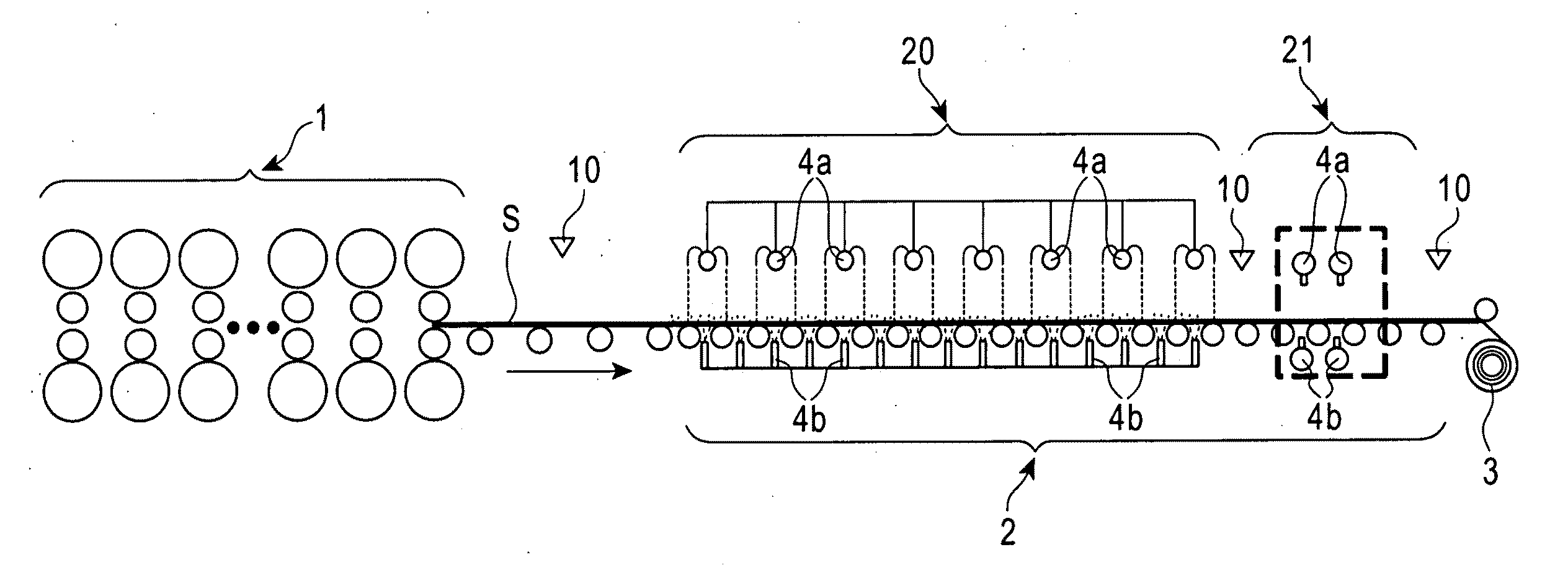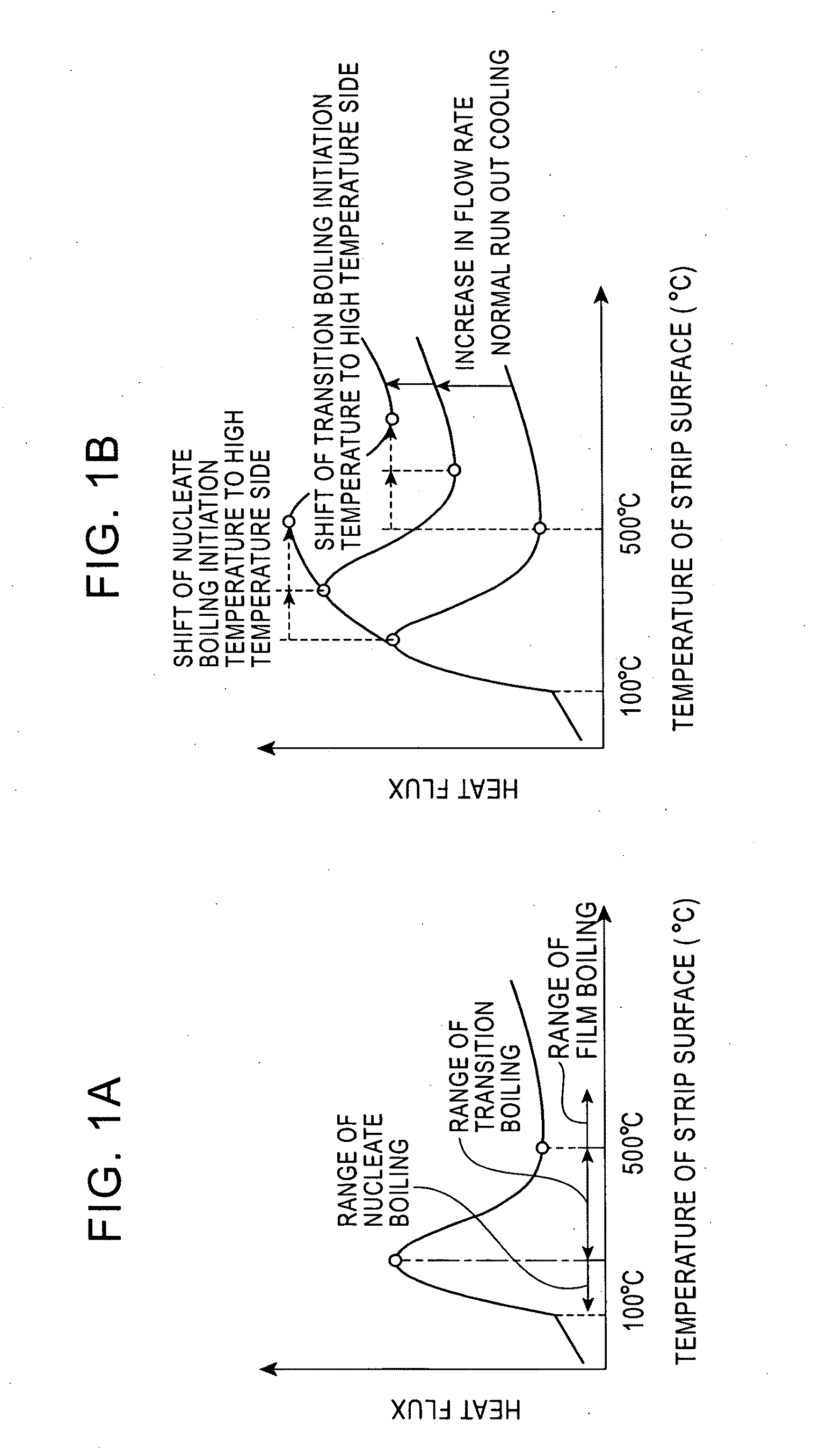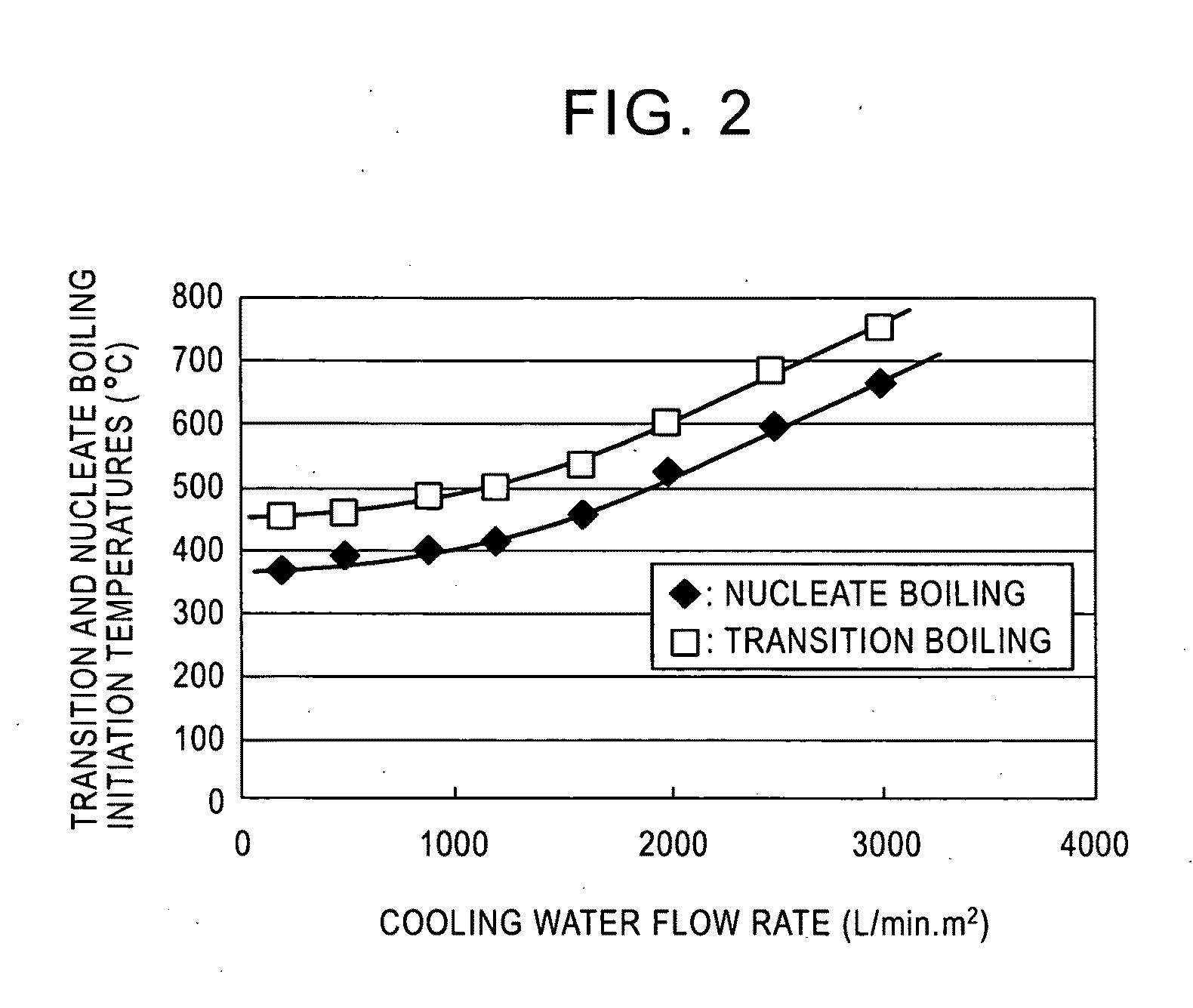Method for cooling hot strip
a hot strip and cooling technology, applied in heat treatment apparatus, shaping tools, furnaces, etc., can solve the problems of temperature deviation, limited effect, etc., and achieve the effect of reducing the amount of cooling water, preventing thermal instability in cooling, and lowering the precision with which the cooling end temperature can be controlled
- Summary
- Abstract
- Description
- Claims
- Application Information
AI Technical Summary
Benefits of technology
Problems solved by technology
Method used
Image
Examples
invention example 1
[0099]At the first run out table 20, the rolled hot strip was cooled to 550° C. with cooling water of 30° C. At the second run out table 21, the cooling water was then supplied by the jet cooling to the upper side of the strip from the two groups of round type jet nozzles A1 and A2 as shown in FIG. 5, while obliquely facing the strip in a strip processing line direction. The cooling water was also supplied by the spraying cooling to the lower side of the strip. The cooling water used at the second run out table 21 had a temperature of 30° C. and a water flow rate of 2500 L / min.m2 at both the upper and lower sides of the strip and the velocity at which the cooling water was ejected on the upper side of the strip was 4 m / sec.
[0100]In this invention example, the average temperature in the longitudinal direction of the strip after cooling was 302° C., which was substantially as desired. The temperature deviation of 50° C. in the longitudinal direction of the strip was also within the de...
invention example 2
[0101]At the first run out table 20, the rolled hot strip was cooled to 550° C. with cooling water of 30° C. At the second run out table 21, the cooling water was then supplied by the jet cooling to the upper side of the strip from the two groups of round type jet nozzles A1 and A2 as shown in FIG. 5, while obliquely facing the strip in a strip processing line direction. The cooling water was also supplied by the spraying cooling to the lower side of the strip. The cooling water used at the second run out table 21 had a temperature of 30° C. and a water flow rate of 3000 L / min.m2 at both the upper and lower sides of the strip and the velocity at which the cooling water was ejected on the upper side of the strip was 4 m / sec.
[0102]In this invention example, the average temperature in the longitudinal direction of the strip after cooling was 303° C., which was substantially as desired. The temperature deviation of 40° C. in the longitudinal direction of the strip was also within the de...
invention example 3
[0103]At the first run out table 20, the rolled hot strip was cooled to 550° C. with cooling water of 30° C. At the second run out table 21, the cooling water was then supplied by the jet cooling to the upper side of the strip from the two groups of round type jet nozzles A1 and A2 as shown in FIG. 5, while obliquely facing the strip in a strip processing line direction. The cooling water was also supplied by the spraying cooling to the lower side of the strip. The cooling water used at the second run out table 21 had a temperature of 30° C. and a water flow rate of 2500 L / min.m2 at both the upper and lower sides of the strip and the velocity at which the cooling water was ejected on the upper side of the strip was 7 m / sec.
[0104]In this invention example, the average temperature in the longitudinal direction of the strip after cooling was 297° C., which was substantially as desired. The temperature deviation of 38° C. in the longitudinal direction of the strip was also within the de...
PUM
| Property | Measurement | Unit |
|---|---|---|
| temperature | aaaaa | aaaaa |
| temperature | aaaaa | aaaaa |
| velocity | aaaaa | aaaaa |
Abstract
Description
Claims
Application Information
 Login to View More
Login to View More - R&D
- Intellectual Property
- Life Sciences
- Materials
- Tech Scout
- Unparalleled Data Quality
- Higher Quality Content
- 60% Fewer Hallucinations
Browse by: Latest US Patents, China's latest patents, Technical Efficacy Thesaurus, Application Domain, Technology Topic, Popular Technical Reports.
© 2025 PatSnap. All rights reserved.Legal|Privacy policy|Modern Slavery Act Transparency Statement|Sitemap|About US| Contact US: help@patsnap.com



